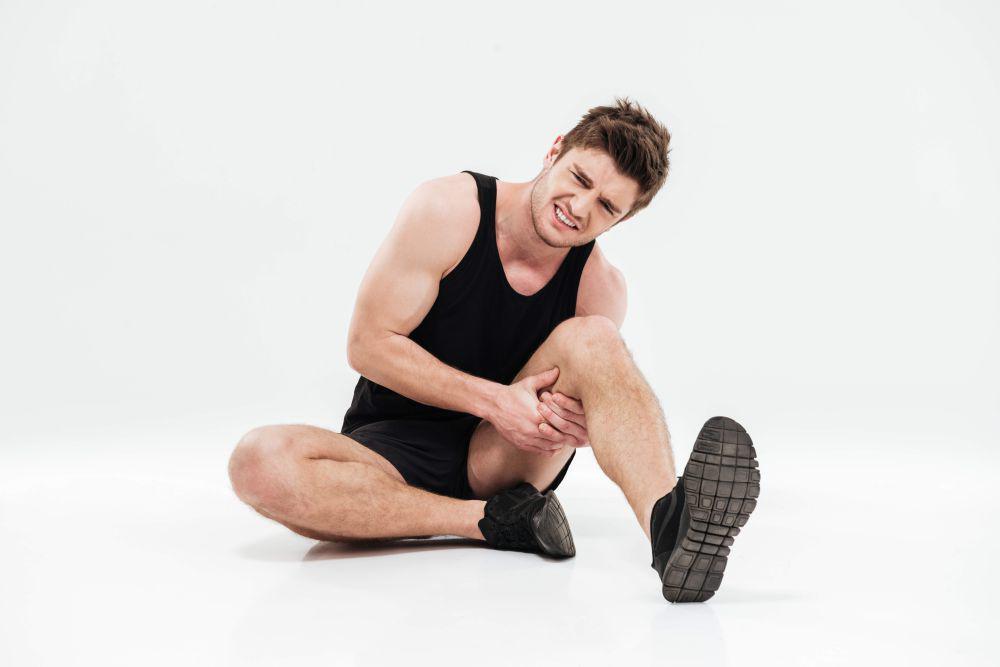Olahraga dengan otot yang masih pegal umumnya aman dan tidak akan menghambat progres latihan. Meski begitu, sebaiknya hindari gerakan yang sangat bergantung pada keseimbangan atau lompatan intens, karena risiko cedera bisa sedikit meningkat.
Dan ingat, pegal adalah hal normal, tetapi rasa sakit tajam atau nyeri yang berlangsung lama tidak boleh diabaikan.
Kamu sebaiknya berkonsultasi dengan dokter jika nyeri otot sangat berat dan bertahan lebih dari 7 hari, muncul memar di area otot yang pegal, atau ada rasa sakit tajam yang berbeda dari pegal biasa.
"Delayed Onset Muscle Soreness." Physio-pedia. Diakses September 2025.
Jonathan D. Umbel et al., “Delayed-onset Muscle Soreness Induced by Low-load Blood Flow-restricted Exercise,” European Journal of Applied Physiology 107, no. 6 (August 28, 2009): 687–95, https://doi.org/10.1007/s00421-009-1175-6.
Donna L. MacIntyre, W. Darlene Reid, and Donald C. McKenzie, “Delayed Muscle Soreness,” Sports Medicine 20, no. 1 (July 1, 1995): 24–40, https://doi.org/10.2165/00007256-199520010-00003.
Olivier Dupuy et al., “An Evidence-Based Approach for Choosing Post-exercise Recovery Techniques to Reduce Markers of Muscle Damage, Soreness, Fatigue, and Inflammation: A Systematic Review With Meta-Analysis,” Frontiers in Physiology 9 (April 26, 2018), https://doi.org/10.3389/fphys.2018.00403.
Bastien Bontemps et al., “Downhill Running: What Are the Effects and How Can We Adapt? A Narrative Review,” Sports Medicine 50, no. 12 (October 9, 2020): 2083–2110, https://doi.org/10.1007/s40279-020-01355-z.
Robert D. Hyldahl, Trevor C. Chen, and Kazunori Nosaka, “Mechanisms and Mediators of the Skeletal Muscle Repeated Bout Effect,” Exercise and Sport Sciences Reviews 45, no. 1 (October 26, 2016): 24–33, https://doi.org/10.1249/jes.0000000000000095.
"Should You Work Out if You're Still Sore From Your Last Session?" Science Alert. Diakses September 2025.
Felipe Damas, Cleiton A. Libardi, and Carlos Ugrinowitsch, “The Development of Skeletal Muscle Hypertrophy Through Resistance Training: The Role of Muscle Damage and Muscle Protein Synthesis,” European Journal of Applied Physiology 118, no. 3 (December 27, 2017): 485–500, https://doi.org/10.1007/s00421-017-3792-9.
Muzaffar Ahmad Khan et al., “Physical and Balance Performance Following Exercise Induced Muscle Damage in Male Soccer Players,” Journal of Physical Therapy Science 28, no. 10 (January 1, 2016): 2942–49, https://doi.org/10.1589/jpts.28.2942.
Mehmet Akif Serinken, Celal Gencoglu, and Berkant Muammer Kayatekin, “The Effect of Eccentric Exercise-Induced Delayed-Onset Muscle Soreness on Positioning Sense and Shooting Percentage in Wheelchair Basketball Players,” Balkan Medical Journal 30, no. 4 (April 30, 2013): 382–86, https://doi.org/10.5152/balkanmedj.2013.007.
Charles Ricardo Lopes et al., “Effects of Resistance Training on Consecutive and Non-consecutive Days on Hormonal, Neuromuscular and Morphological Responses in Recreationally Trained Men,” Brazilian Journal of Kinanthropometry and Human Performance 25 (January 1, 2023), https://doi.org/10.1590/1980-0037.2023v25e85848.
Alcino D Da Silva Carvalho and José a Rodrigues Santos, “Nonconsecutive Versus Consecutive-day Resistance Training in Recreationally Trained Subjects,” The Journal of Sports Medicine and Physical Fitness 58, no. 3 (February 1, 2018), https://doi.org/10.23736/s0022-4707.16.06660-3.
Micah Gross, Thomas Swensen, and Deborah King, “Nonconsecutive- Versus Consecutive-Day High-Intensity Interval Training in Cyclists,” Medicine & Science in Sports & Exercise 39, no. 9 (September 1, 2007): 1666–71, https://doi.org/10.1249/mss.0b013e3180cac209.
